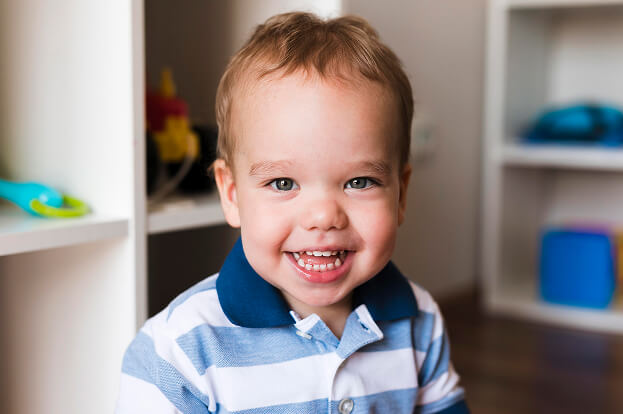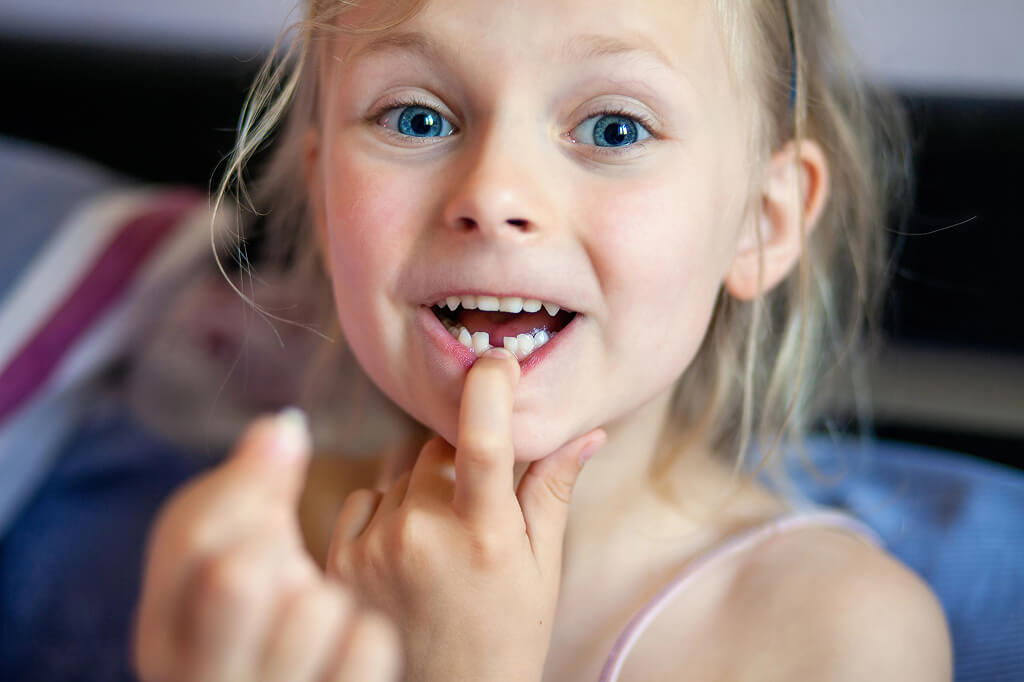Losing baby teeth is a natural milestone in childhood, but many parents don’t realize how crucial this process is for long-term oral health. Beyond just making room for adult teeth, baby teeth play a vital role in jaw development, speech formation, and even facial structure. Let’s break down exactly how many baby teeth kids lose, the order of baby teeth loss, and what parents need to know at each stage of this fascinating transition.
The Purpose of Baby Teeth and Their Natural Shedding Process
Baby teeth are often dismissed as temporary placeholders, but they serve a much greater purpose than simply making way for adult teeth. They act as nature’s blueprint for a child’s oral and facial development, ensuring proper alignment of the jaw and creating the necessary space for permanent teeth to emerge correctly. If a baby tooth is lost too early due to decay or injury, the surrounding teeth may shift into the empty space, leading to misalignment and potential orthodontic complications later on.
Another often-overlooked function of baby teeth is their impact on speech development. The position and spacing of these teeth influence how children form sounds, particularly for letters like “s,” “th,” and “f.” Premature loss of baby teeth can subtly affect speech patterns, sometimes requiring intervention from a speech therapist.
The baby teeth exfoliation stages are also intricately connected to a child’s overall growth. As the jaw expands, it signals the roots of baby teeth to dissolve in a process called resorption, allowing them to loosen naturally. This gradual process prevents unnecessary pain or trauma, unlike forced extractions. Interestingly, research suggests that the timeline of baby teeth shedding can even indicate a child’s biological maturity, correlating with their overall skeletal development.
While parents often focus on brushing and flossing, understanding the order of baby teeth loss in children is just as critical. A disruption in this sequence—whether teeth fall out too early or refuse to budge—can signal underlying issues that might impact long-term dental health.
Timeline: When Do Kids Lose Baby Teeth?
The order of baby teeth loss in children is not random—it follows a carefully orchestrated sequence that ensures the smooth transition to permanent teeth. Each baby tooth serves as a guide for the adult tooth beneath it, helping it emerge in the correct position. When baby teeth are lost out of order, it can sometimes lead to misalignment, crowding, or impaction of the permanent teeth.
While there may be slight variations in timing, most children follow this general sequence of baby tooth loss:
- Lower central incisors (bottom front teeth) – Usually the first to go, between ages 6-7.
- Upper central incisors (top front teeth) – Follow closely after, typically around age 7.
- Lateral incisors (next to the front teeth) – Usually lost between ages 7-8.
- First molars and lower canines – These back teeth begin to shed between ages 9-10.
- Upper canines and second molars – The last baby teeth to fall out, typically between ages 10-13.
If a tooth falls out too early due to decay or trauma, the surrounding teeth may drift, creating space issues that could affect how the permanent teeth emerge. Monitoring the sequence of baby teeth falling out helps parents and dentists detect any potential concerns before they become major orthodontic problems.

Stages of Baby Teeth Falling Out: What Happens at Each Step?
The stages of baby teeth falling out follow a carefully timed biological process designed to make way for permanent teeth. This natural transition is driven by the resorption of baby tooth roots, allowing them to loosen and eventually shed. While the process is gradual, each stage marks a significant change in a child’s oral development.
Stage 1 (Ages 6-7): The First Wiggles
The lower and upper central incisors are the first to show movement. Beneath the gums, permanent teeth push upward, dissolving the baby tooth roots. Kids often notice these teeth becoming slightly mobile before any visible gaps appear.
Stage 2 (Ages 7-8): Increasing Tooth Loss in the Front
Lateral incisors start to shed, widening the gaps in a child’s smile. The new permanent teeth may seem oversized at first, but the jaw is still growing to accommodate them.
Stage 3 (Ages 9-10): The Molars Begin to Go
Primary molars loosen as premolars begin forming underneath. Unlike incisors, molar loss tends to be slower, sometimes taking months before completely falling out.
Stage 4 (Ages 10-12): Final Shedding
Canines and second molars are the last to exfoliate. As they fall out, the child’s dental arch begins taking its final shape, leading to the emergence of a full set of permanent teeth.
What Parents Should Expect During Baby Teeth Shedding
The process of baby teeth shedding can be unpredictable—some children barely notice loose teeth, while others experience mild discomfort or anxiety. Understanding what’s normal can help parents support their child through each stage of tooth loss.
One of the first signs is increased tooth mobility, which may lead to children wiggling their teeth frequently. This is a natural response, but excessive force—such as twisting or pulling a tooth before it’s ready—can damage the sensitive gum tissue. A slight amount of bleeding is common when a tooth finally detaches, but excessive bleeding or prolonged pain may indicate an underlying issue.
Some children report sensitivity while chewing as the baby tooth loosens. During this time, softer foods and gentle brushing can help prevent irritation. Interestingly, some kids may feel emotional about losing their teeth, associating it with growing up. Parents should acknowledge this as part of their child’s development, offering reassurance and celebrating each milestone.
In cases where a baby tooth remains firmly in place despite an emerging permanent tooth (a condition called shark teeth), parents should consult a pediatric dentist. If left unchecked, this can cause misalignment or crowding in the adult teeth. Monitoring the baby teeth shedding schedule ensures a smooth transition and prevents potential orthodontic concerns.
Common Concerns About Baby Teeth Loss
Parents often have concerns about whether their child’s baby teeth loss timeline is progressing normally. While most cases follow a typical pattern, there are situations where baby tooth loss may raise questions or require professional attention.
What if My Child Loses a Baby Tooth Too Early?
If a baby tooth falls out prematurely due to trauma, decay, or underlying dental issues, it can disrupt the natural alignment of permanent teeth. The neighboring teeth may shift into the empty space, potentially causing crowding. In some cases, a pediatric dentist may recommend a space maintainer to keep the area open until the adult tooth is ready to emerge.
What If a Baby Tooth Won’t Fall Out?
Delayed tooth loss can be caused by genetic factors, an underlying permanent tooth failing to develop, or an adult tooth growing in the wrong position. In cases where a baby tooth remains intact past the normal baby teeth shedding schedule, an X-ray may be needed to assess whether extraction is necessary.
Why Are My Child’s Adult Teeth Growing Before the Baby Teeth Fall Out?
This condition, often called shark teeth, occurs when permanent teeth erupt behind the baby teeth instead of directly underneath them. While this sometimes resolves on its own, a dentist may need to remove the baby teeth to prevent crowding or misalignment.
While variations in the sequence of baby teeth falling out are common, monitoring for irregularities can help ensure a child’s long-term dental health remains on track.
Final Thoughts: What Parents Need to Know About Baby Teeth Loss
The baby teeth loss timeline is an important milestone in a child’s development, marking the transition to a permanent, healthy smile. While most children follow a predictable sequence of baby teeth falling out, variations in timing, order, or delayed shedding can sometimes indicate the need for professional evaluation. Keeping an eye on your child’s baby teeth shedding schedule and addressing concerns early can help prevent potential orthodontic issues down the road.
Parents play a key role in ensuring a smooth transition by encouraging proper oral hygiene, monitoring tooth loss patterns, and reassuring children through the process. If your child loses a tooth too early, has difficulty shedding a baby tooth, or experiences discomfort beyond what’s expected, a visit to a pediatric dentist can provide clarity and solutions.
At Ballantyne Pediatric Dentistry, we’re here to guide you through every stage of your child’s dental journey. If you have questions or concerns about your child’s tooth loss, give us a call at 704-752-1900 to schedule an appointment. Let’s ensure your child’s smile stays healthy, strong, and on the right track for a lifetime of excellent oral health!

